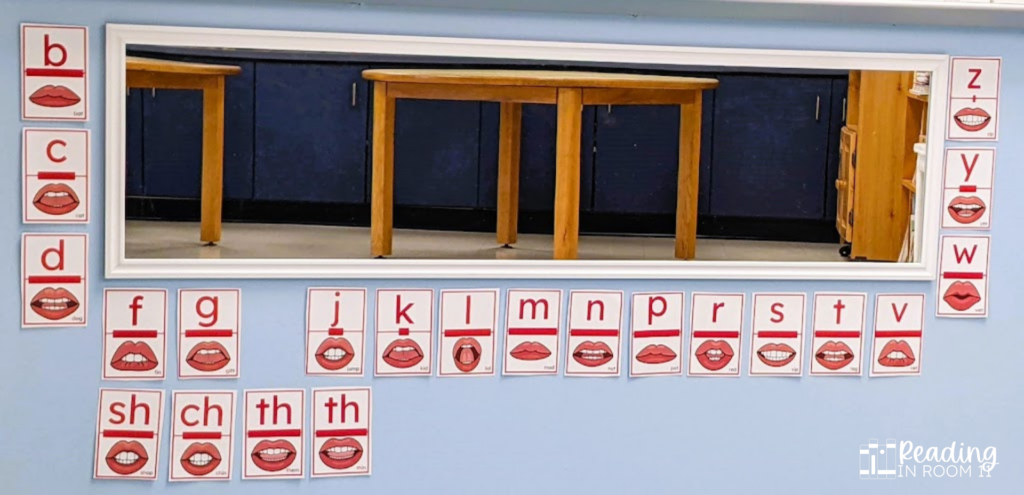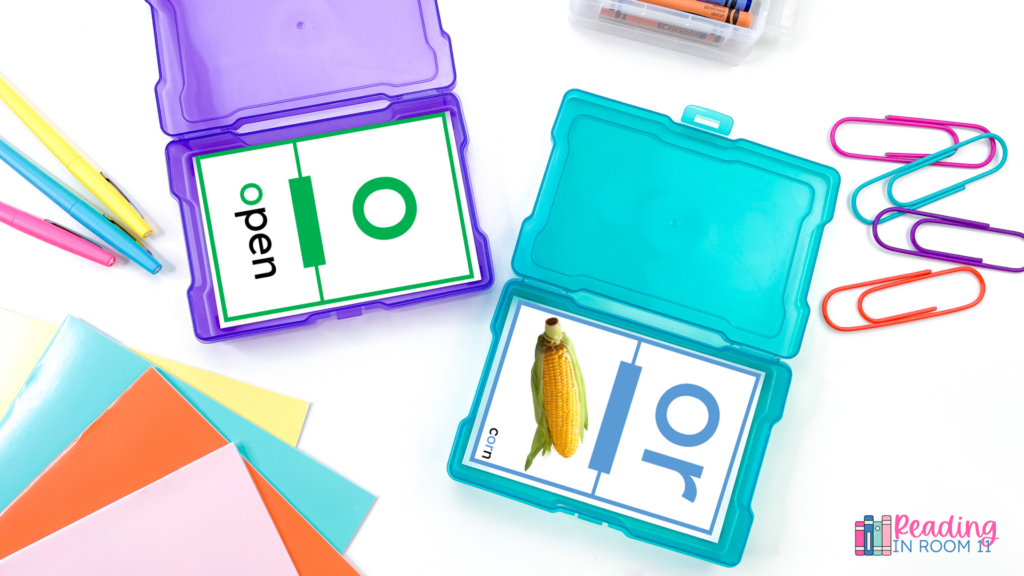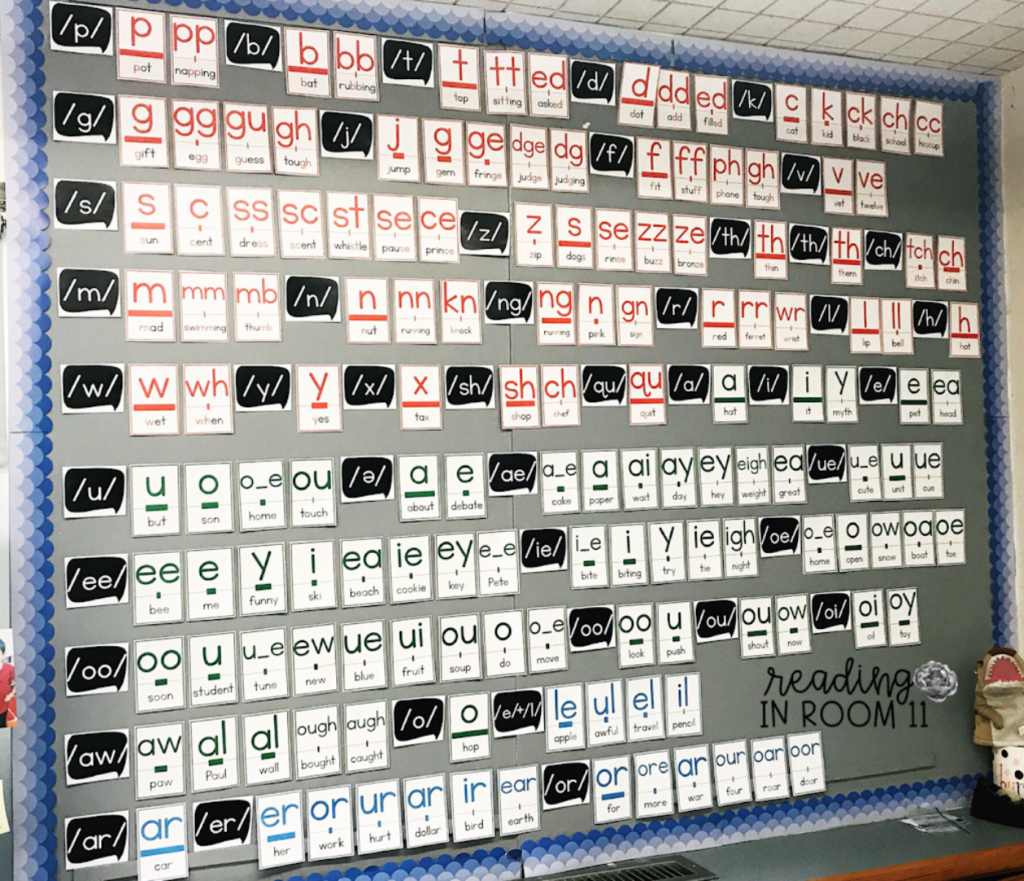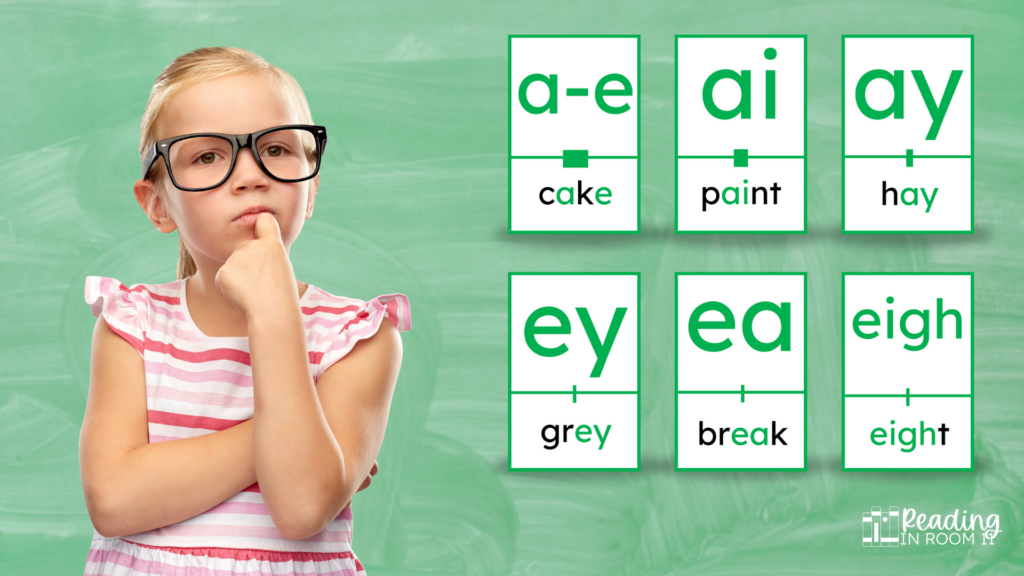Did you know the English alphabet comprises 26 letters, 44 sounds, and a mind-boggling 150 different spellings? Yes, you read that right—150 different spellings! This can make teaching sound-spelling relationships to students a challenge, but sound cards can help. Get ready to learn how sound cards can revolutionize your reading instruction, helping students commit these sound spellings to memory and become more fluent and automatic readers. Keep reading to discover where you can access over 300 free sound cards!
What are Sound Cards?
Sound cards are visual representations of specific sounds, complete with sample words and power bars. The power bar indicates the frequency of each sound’s spelling. The longer the bar, the more common the spelling. This makes it easy for students to see which sounds are most common and which sounds are less common.
There are three types of sound cards:
- Sound Spellings Only
- Visual Cues
- Articulation Prompts
Why are Sound Cards Important?
Explicitly teaching sound-symbol relationships is vital for students to read and spell accurately. The power bar on each sound card helps students understand the spelling’s frequency. The longer the power bar, the more frequent the spelling of that sound.
How to Use Sound Cards:
There are so many ways to incorporate sound cards into your teaching. Here are some of my favorites:
1. Sound Cards as Guided Practice:
Use sound cards with articulation prompts to give students a visual model of how their mouths should look when producing each sound. These prompts are particularly useful when introducing new sounds or assisting students in pronouncing sounds correctly.

This is a photo of how the speech therapist at my school uses a full-length mirror and sound cards to help students with articulation.
2. Sound Cards as a Warm-Up:
Reviewing the sounds before a lesson activates prior knowledge and solidifies orthographic mapping. Orthographic mapping is the process of associating sounds with letters and letter combinations. This process is essential for students to become fluent readers.
I have the sound cards organized by skill and we begin each reading group by reviewing the sounds. Here are some ways you can mix up your morning review:
- Assign each student a pile to review the sounds individually.
- Hold the pile yourself and have the students say the sounds in unison.
- Take turns with the students, each saying a sound from the pile.
.As students become more proficient, you can gradually phase out the sound cards with visual prompts. You can also explore digital options for review (available with Syllable Type Lessons).

3. Sound Cards as a Display:
You can also create a wall display with all the sound cards. This is a great reference during lessons, particularly when discussing sounds with multiple spellings while reading or writing.

4. Sound Cards as Discussion Prompts:
The power bars on each sound card are an excellent tool for getting students to think about sound-spellings. Simply ask, “What do you notice?” This open-ended question encourages students to make their observations about the common or uncommon a specific spelling is.
You can also discuss the position of vowel sounds within words. For example, students might notice that /ai/ is frequently found in the middle of a word/syllable, while /ay/ tends to appear at the end.

Where to Find Sound Cards:
Ready to enhance your students’ reading skills? Explore a collection of 300+ free sound cards today and see the positive impact on their learning journey!
Final Thoughts
Whether you use them for guided practice, warm-ups, displays, or discussion prompts, sound cards are a powerful tool to help your student navigate the complicated sound spelling relationships in the English language.
Other Ideas?
If you have other ideas on how to use sound cards, let me know in the comments so I can add it to the list!
Pin for Later:

